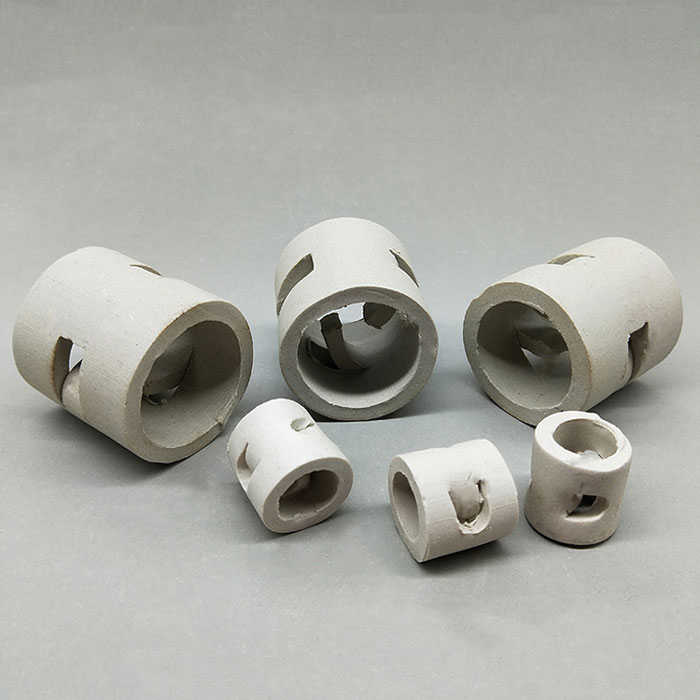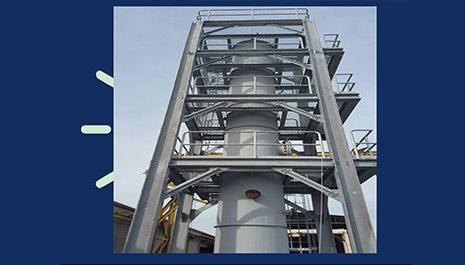In primary and secondary treatment of wastewater, aeration is often used as a method to remove organic matter. Immersed bubble aeration is particularly effective by spreading small air bubbles that mix with the wastewater and encourage aerobic bacteria to break down organic waste. In general, submerged bubble aeration provides a more advanced system than surface aeration, and many wastewater treatment facilities have moved in this direction.
However, there are two different types of bubble diffusers: fine bubble diffusers and coarse bubble diffusers. Choosing the best option for your facility will depend on your needs and priorities.
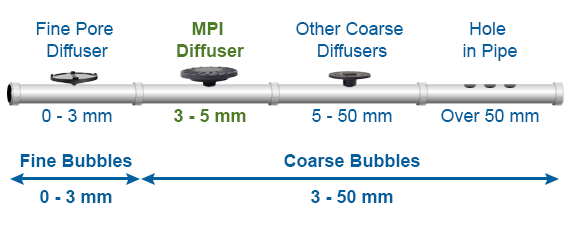
What is the difference between fine bubble and coarse bubble diffusers?
Although both fine and coarse bubble diffusers work through bubble aeration, it is important to identify some of the distinguishing features of their design and function to determine which one is suitable.
Fine bubble diffusers produce smaller diameter bubbles for the aeration process. These bubbles typically measure 1 to 3 millimeters in diameter. This type of fine bubble aeration typically provides 2% or more standard oxygen transfer efficiency (SOTE) during aeration. The tiny bubble diffusers themselves come in different diameters. At Fine Bubble Diffuser Suppliers, Inc, we offer 7-inch, 9-inch, and 12-inch fine bubble diffusers designed to improve performance and durability in municipal and industrial applications.
Fine Bubble Diffusers: Types
Fine bubble diffusers come in several different features and sophistications. Below, you will find a short list of some excellent bubble diffuser designs:
1. Records
Disk diffusers consist of an EPDM rubber membrane mounted on a plate.
We offer a unique PTFE coating on rubber membrane that is highly effective in preventing bacterial coating and dirt. When compressed air flows through the membrane, the rubber expands. This expansion opens up clusters of small holes and releases thousands of bubbles into the water.
Disk diffusers are very efficient in their functionality, but can be more complex to install than other diffuser types.
2.Tube
A tubular diffuser consists of a long, narrow plastic or ceramic cylinder surrounded by an EPDM rubber membrane. Likewise, when compressed air flows through rubber, the rubber expands, opening tiny pores and releasing small-diameter bubbles into the wastewater.
Such fine bubble diffusers tend to have a larger surface area and produce more bubbles than disc diffusers. They require a lower initial outlay than disc diffusers because they are simpler to install, although their long-term maintenance costs are not always lower.
3. Perforated pipe/foam pipe
Although disc diffusers and tube diffusers are the two main types of fine bubble diffusers, other types of fine bubble diffusers are also available, such as perforated tube or bubble tube diffusers. These consist of perforated plastic panels. Compressed air flows through and leaks out of the perforations.
Unlike disc and tube diffusers, there is no expansion or contraction of the material to open the holes.
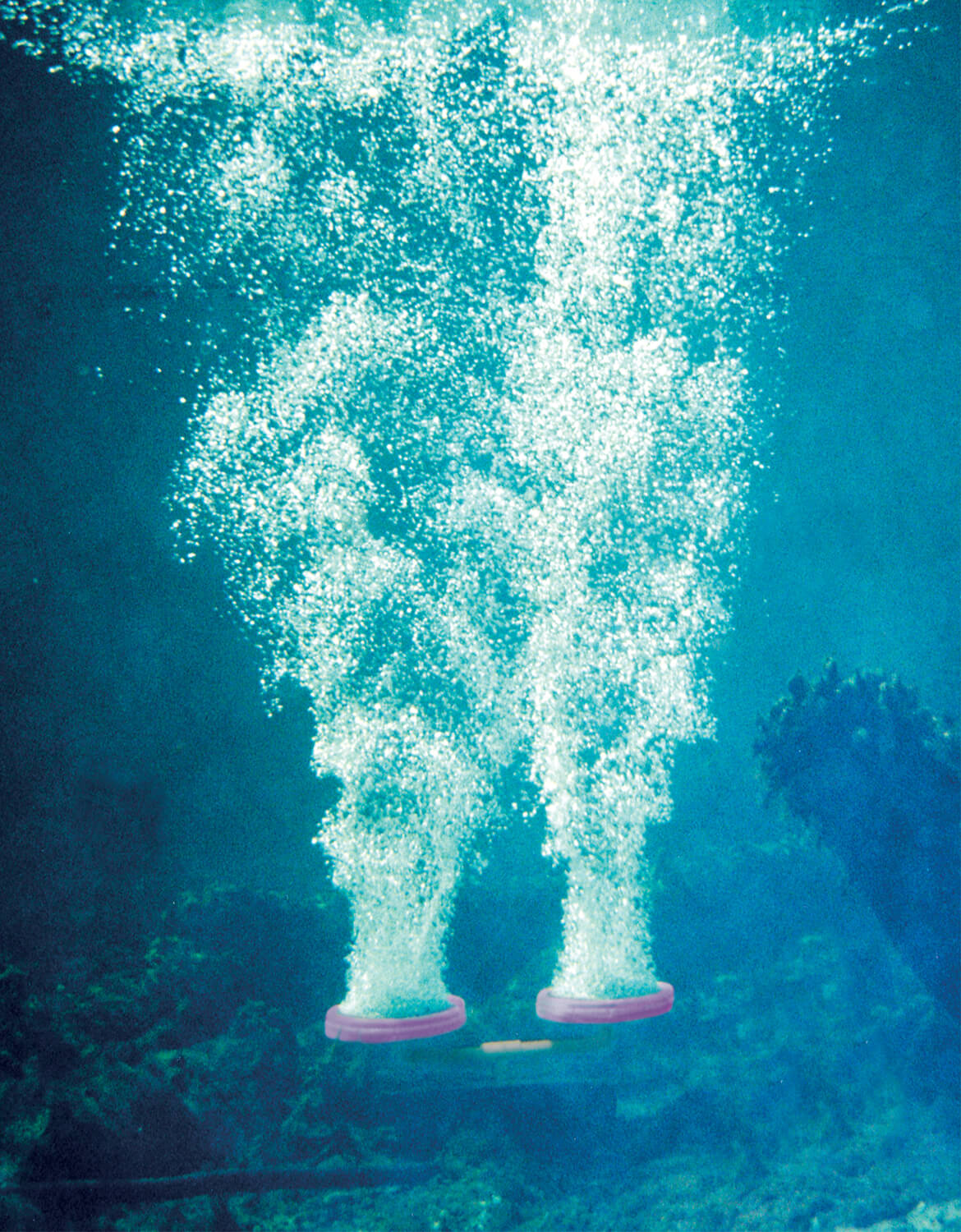
Fine Bubble Diffusers: Advantages
Below you will find a discussion of some of the features that make disc and tube fine bubble diffusers an effective choice for wastewater treatment.
1. Efficient aeration
Standard aeration efficiency (SAE) is measured by the pounds of oxygen mixed into the wastewater per horsepower-hour produced by the blower driving the treatment system.
Fine bubble diffusers disperse more oxygen into the water column for more efficient aeration, typically producing at least twice as much oxygen mass as coarse bubble diffusers. Especially during secondary treatment, when wastewater must be purified to meet EPA removal standards of 85% organic matter, efficient aeration is a powerful asset.
2. Efficient oxygen transfer
Standard Oxygen Transfer Efficiency (SOTE) refers to the efficiency with which dispersed oxygen combines with water in order for the aeration process to occur. A large number of tiny bubbles, such as those produced with a fine bubble diffuser, can transfer more oxygen into the water column than a smaller number of larger bubbles.
The improvement in aerator oxygen transfer efficiency is the result of two factors:
Surface area: The cumulative surface area of a large number of small bubbles is much greater than that of a few large bubbles. When air and water come into contact at the bubble surface, the increased surface area allows for a higher rate of oxygen transfer.
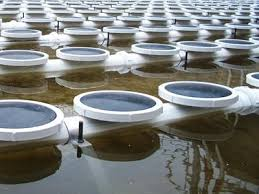
Speed: Smaller bubbles rise more slowly than larger bubbles. This slower speed results in longer contact time between air and water and allows more oxygen to be distributed throughout the water column. Increased oxygen transfer time results in higher transfer efficiency.
In summary, the smaller bubbles produced by a fine bubble diffuser can accomplish approximately the same amount of oxygen transfer as half the air as required by a coarse bubble diffuser.
3. Energy efficiency
Energy efficiency is one of the most attractive enhancements of fine bubble diffusers and is the main reason for their widespread adoption.
In a typical wastewater treatment facility, 50% of the electricity demand comes from the ventilation system. Energy-efficient diffusers reduce power requirements and provide significant cost savings for any treatment plant. Fine bubble diffusers are generally less expensive to operate than other types of aeration (such as coarse bubble aeration) in terms of the energy used. This is because fine bubble diffusers require less compressed air and therefore less demand on the blowers that drive the aeration system.
Now that we have discussed fine bubble diffusers and their pros and cons, let's look at some of the pros and cons of coarse bubble diffusers.
Coarse Bubble Diffuser: Advantages
Below you will find a discussion of the best selling points of coarse bubble diffusers for wastewater treatment systems:
1. High Alpha Factor
Coarse bubble diffusers have larger holes, which means the diffuser is less prone to fouling than fine bubble diffusers. Bacteria and biosolids are less likely to become trapped and encrusted in perforations. This keeps the diffuser operating efficiently and reduces back pressure that would otherwise cause wear and tear on the blower.
2. Strong mixing
The larger bubbles produced by the coarse bubble diffuser have greater volume, expel more waste liquid, and therefore produce more mixing power. Biosolids remain suspended and are less likely to form unwanted sludge. The effective mixing of the coarse bubble diffuser aids in the decomposition of organic waste, thanks to its powerful combination of oxygen, bacteria and waste.
3. Low maintenance costs
Coarse bubble diffusers have larger holes, which means the diffuser is less likely to clog and doesn't require frequent cleaning with a pressure washer or hand brush. This low maintenance saves treatment facilities money and time.
4.Persistence
Enhanced stain resistance means diffusers will wear out and need to be replaced less frequently. The reduction in replacement burden also saves money.
Why is fine bubble diffusion better than coarse bubble diffusion?
When discussing underground aeration systems, there may be a misconception that because bubble diffusion systems are effective at mixing the water column, they must be effective at increasing the oxygen content in the water. Although they are great at mixing water, they add very little oxygen to the water and require more energy to operate than fine bubble diffusion aeration.
Benefits of Fine Bubble Diffusion
Aeration efficiency: The size of the bubbles ultimately determines how much air is added to the water column. Smaller bubbles have more surface area to hold oxygen and rise more slowly than larger bubbles, making them almost twice as efficient at delivering oxygen to the water.
Fine bubble diffusers are easier to install and maintain: Stadium bubble diffusers usually have to be fixed to the ground, which means the water must be drained off and surface sludge cleared before installation! The fine bubble diffuser simply drops into the water and, if a float is attached to the weighted base, can be easily pulled out and cleaned when necessary.
Fine bubble diffusers are less prone to clogging: Rough bubbles mean larger holes in the diffuser membrane, which makes them more susceptible to clogging. If the diffuser becomes clogged, it can cause back pressure issues that can cause damage to the air compressor.







